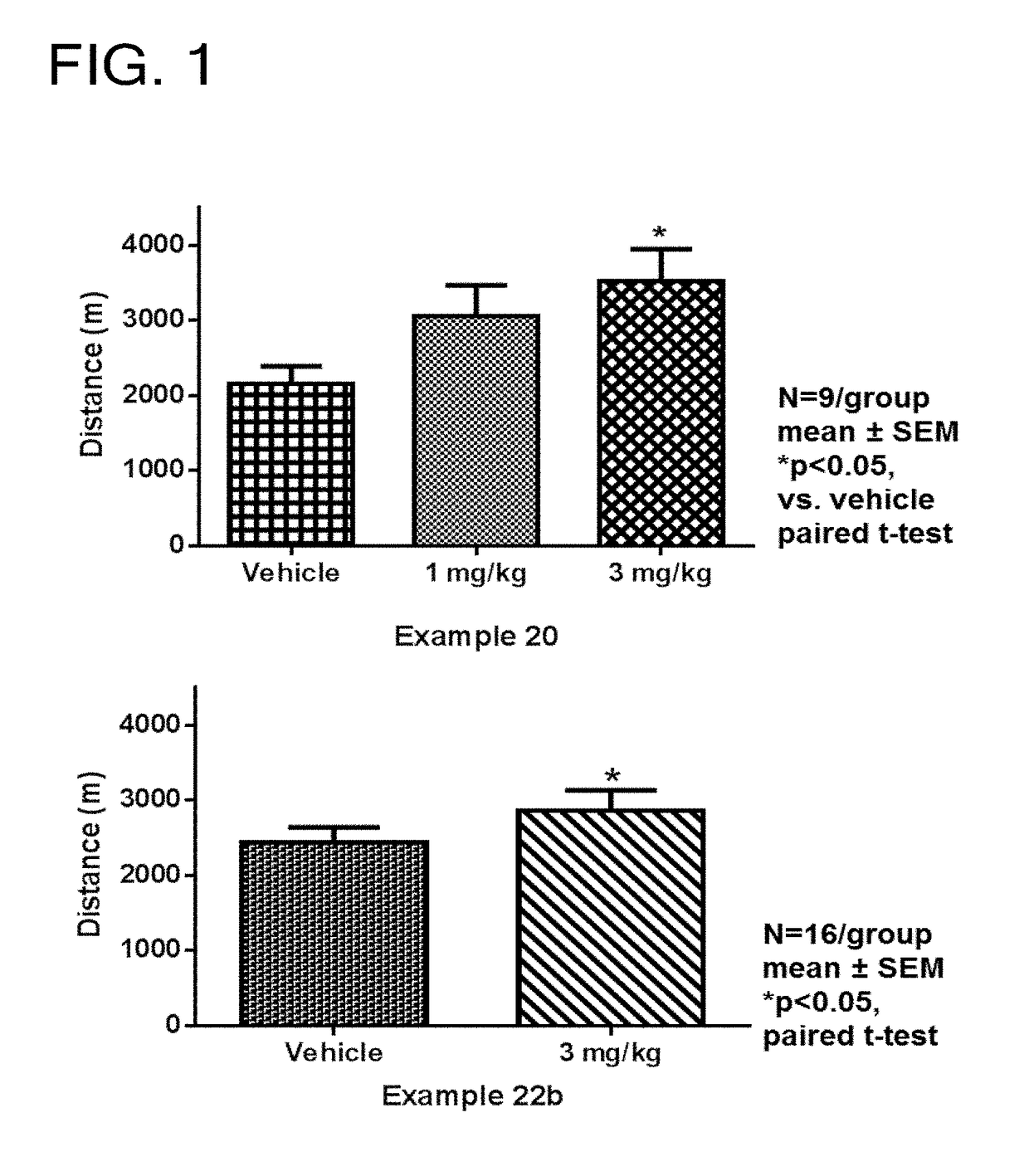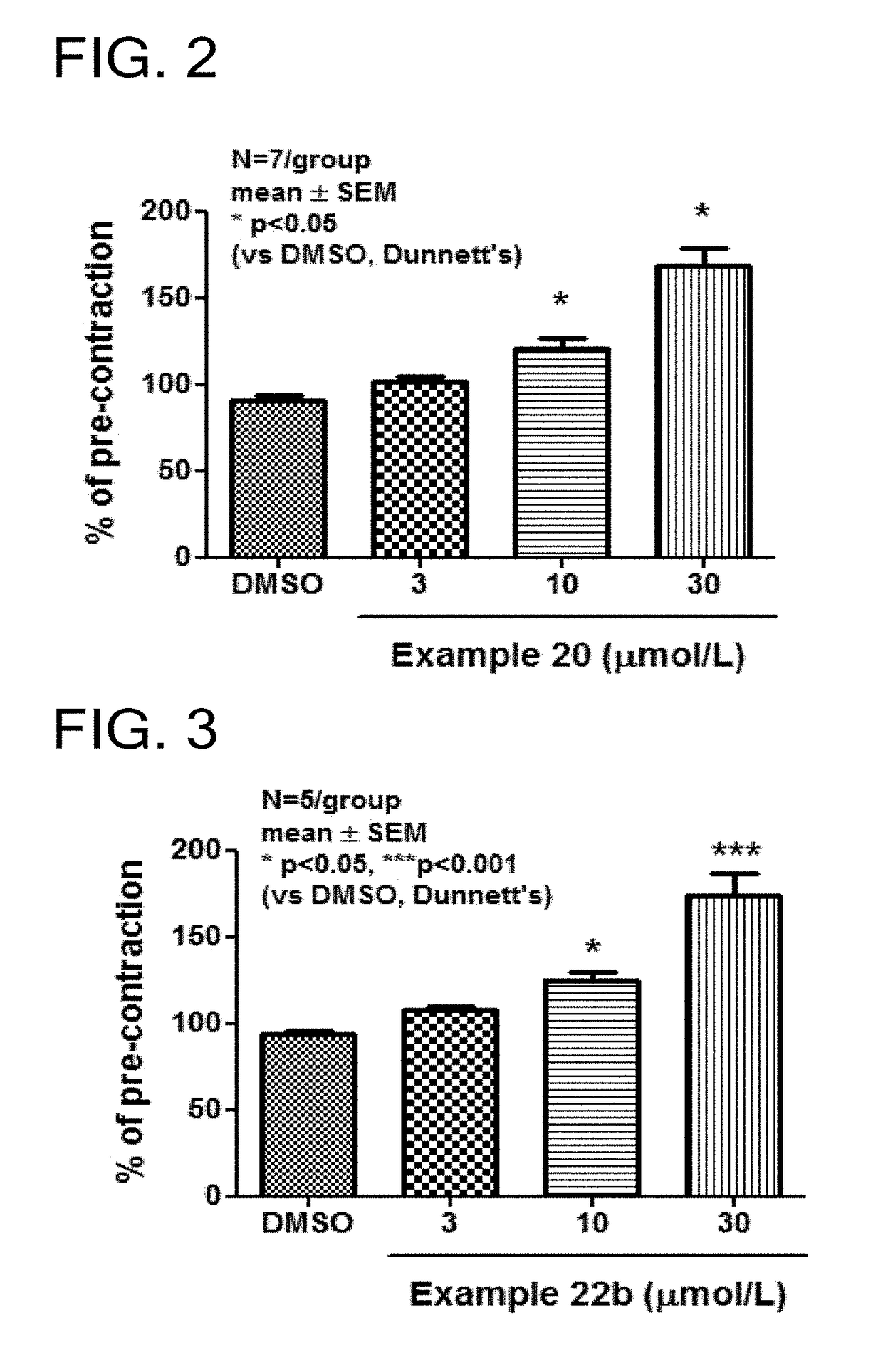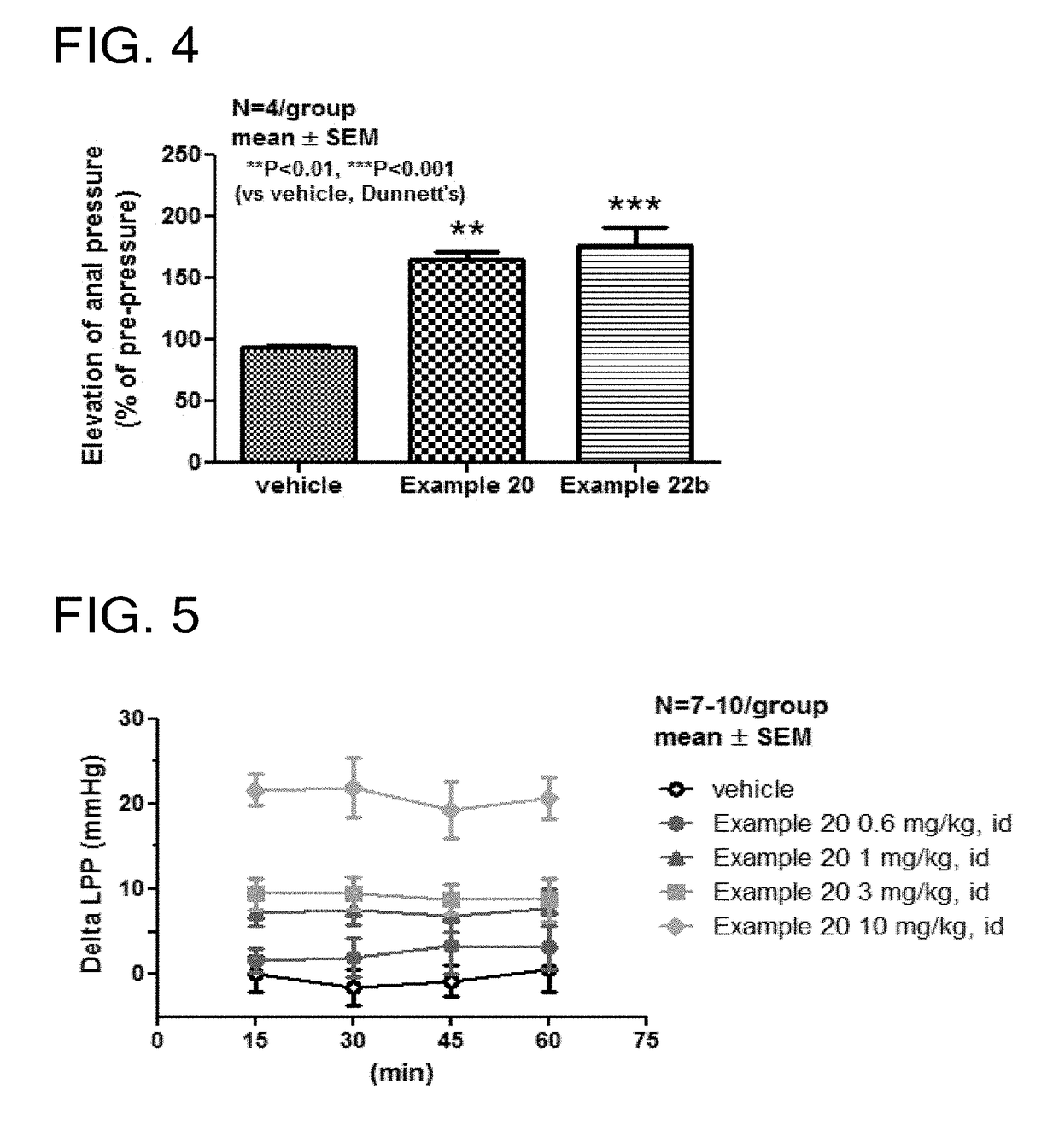Tetrahydroisoquinoline derivatives
a technology of isoquinoline and derivatives, applied in the field of tetrahydroisoquinoline derivatives, can solve the problems of limited treatment or no cure for most neuromuscular diseases, and the loss of muscle function
- Summary
- Abstract
- Description
- Claims
- Application Information
AI Technical Summary
Benefits of technology
Problems solved by technology
Method used
Image
Examples
preparation example 1 (
1a and 1b)
[0672]To a solid of P2O5 (50.0 g) was added H3PO4 (50.6 g), and the mixture was stirred at 140° C. for 1.5 hours. To the mixture were added 2-(3-bromophenyl)acetamide (5.00 g) and acetone (3.5 mL) at 80° C., and then stirred at 140° C. for 2 hours. To the mixture was added acetone (2.0 mL) at 140° C., and stirred at the same temperature for 1 hour. And then, to the mixture was added acetone (2.0 mL) at 140° C. again, and stirred at the same temperature for additional 1 hour. The mixture was poured into iced water, and diluted with EtOAc, and the phases were separated. The organic layer was washed with sat. aq. NaHCO3 and brine, and dried over Na2SO4, filtered, and concentrated under reduced pressure. The residue was purified by silica gel column chromatography (CHCl3 / MeOH). The obtained solid was washed with 50% EtOAc / hexanes to give 6-bromo-1,1-dimethyl-1,4-dihydroisoquinolin-3(2H)-one (2.01 g) as a solid. The mother liquid was concentrated under reduced pressure to give ...
preparation example 2
[0673]A mixture of 6-bromo-1,1-dimethyl-1,4-dihydroisoquinolin-3(2H)-one (100 mg), N-bromosuccinimide (72 mg), 3-chloroperbenzoic acid (7 mg), and CCl4 (3 mL) was refluxed for 3 hours. And then, the mixture was cooled to room temperature, filtered, and concentrated under reduced pressure. The residue was purified by silica gel column chromatography (EtOAc / hexanes) to give 4,6-dibromo-1,1-dimethyl-1,4-dihydroisoquinolin-3(2H)-one (75 mg) as a solid.
preparation example 3
[0674]To a mixture of 2-(3-bromophenyl)butanoic acid (582 mg) and MeCN (10 mL) were added WSC / HCl (551 mg) and HOBt (389 mg) under Ar atmosphere, and the mixture was stirred at room temperature for 1 hour. To the mixture was added 28% aq. ammonia (0.8 mL) under ice bath cooling dropwise over 5 min. Then the mixture was stirred at room temperature for 13 hours. The mixture was concentrated under reduced pressure, diluted with H2O and stirred under ice bath cooling for 1 hour. The precipitate was collected to give the crude product as a solid. The obtained solid was purified by silica gel column chromatography (EtOAc / CHCl3) to give 2-(3-bromophenyl)butanamide (427 mg) as a solid.
PUM
| Property | Measurement | Unit |
|---|---|---|
| 2θ° | aaaaa | aaaaa |
| temperature | aaaaa | aaaaa |
| temperature | aaaaa | aaaaa |
Abstract
Description
Claims
Application Information
 Login to View More
Login to View More - R&D
- Intellectual Property
- Life Sciences
- Materials
- Tech Scout
- Unparalleled Data Quality
- Higher Quality Content
- 60% Fewer Hallucinations
Browse by: Latest US Patents, China's latest patents, Technical Efficacy Thesaurus, Application Domain, Technology Topic, Popular Technical Reports.
© 2025 PatSnap. All rights reserved.Legal|Privacy policy|Modern Slavery Act Transparency Statement|Sitemap|About US| Contact US: help@patsnap.com



